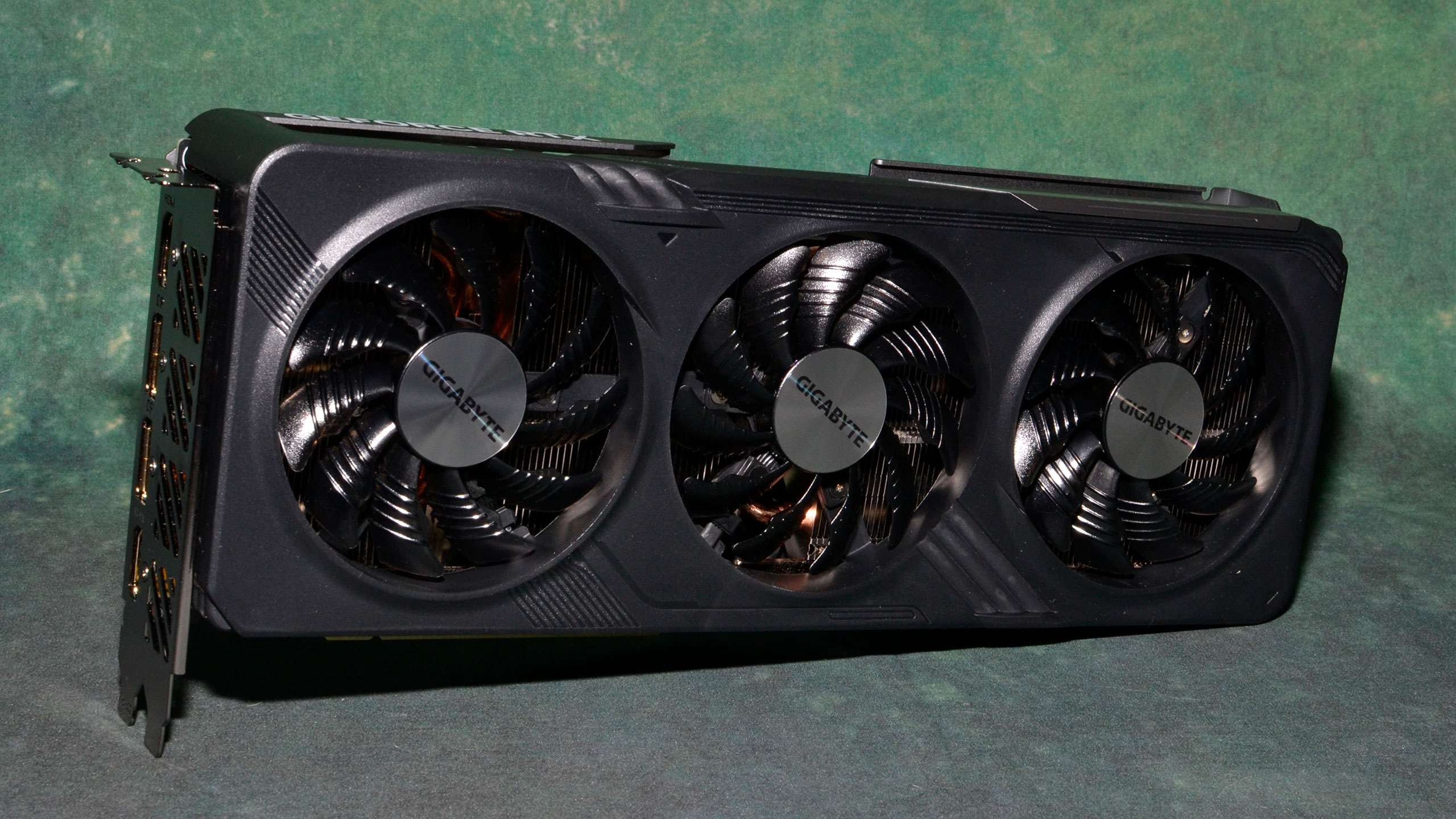Why you can trust Tom's Hardware
In theory, the move to 1440p ultra should help the 16GB RTX 4060 Ti to strut its stuff. Except, it still has that 128-bit memory interface, which means maybe there's not as much strutting to be had. Let's start with the high-level overview.

Hrmph. So much for the benefits of 16GB, right? Except, it's more a case of there not being much benefit in our particular suite of benchmarks. There are some instances where the 16GB card clearly beats the 8GB model, but when you average that out across 15 games, it's not as visible.
Overall, then, the 16GB and 8GB 4060 Ti are still tied. Interestingly, the RTX 3070 goes from being just slightly behind the 4060 Ti to just slightly ahead. They're still tied, but that does show that the 128-bit interface isn't helping. Less cache with a 256-bit interface, even when paired with an older architecture that offers 10% lower theoretical compute, clearly indicates raw memory bandwidth is at least partially to blame for the lackluster performance.
Against AMD, things are also worse. While the 4060 Ti (both variants) and the 6800 are basically still tied, there's an overall swing again from the 6800 being a couple of percent slower to now being a couple of percent faster. And Nvidia certainly gets help from the ray tracing results, which means there are cases where the 6800 offers a lot better performance at 1440p in rasterization games. The 6800 XT meanwhile improves from a 13% lead at 1080p ultra to a 19% lead at 1440p ultra.
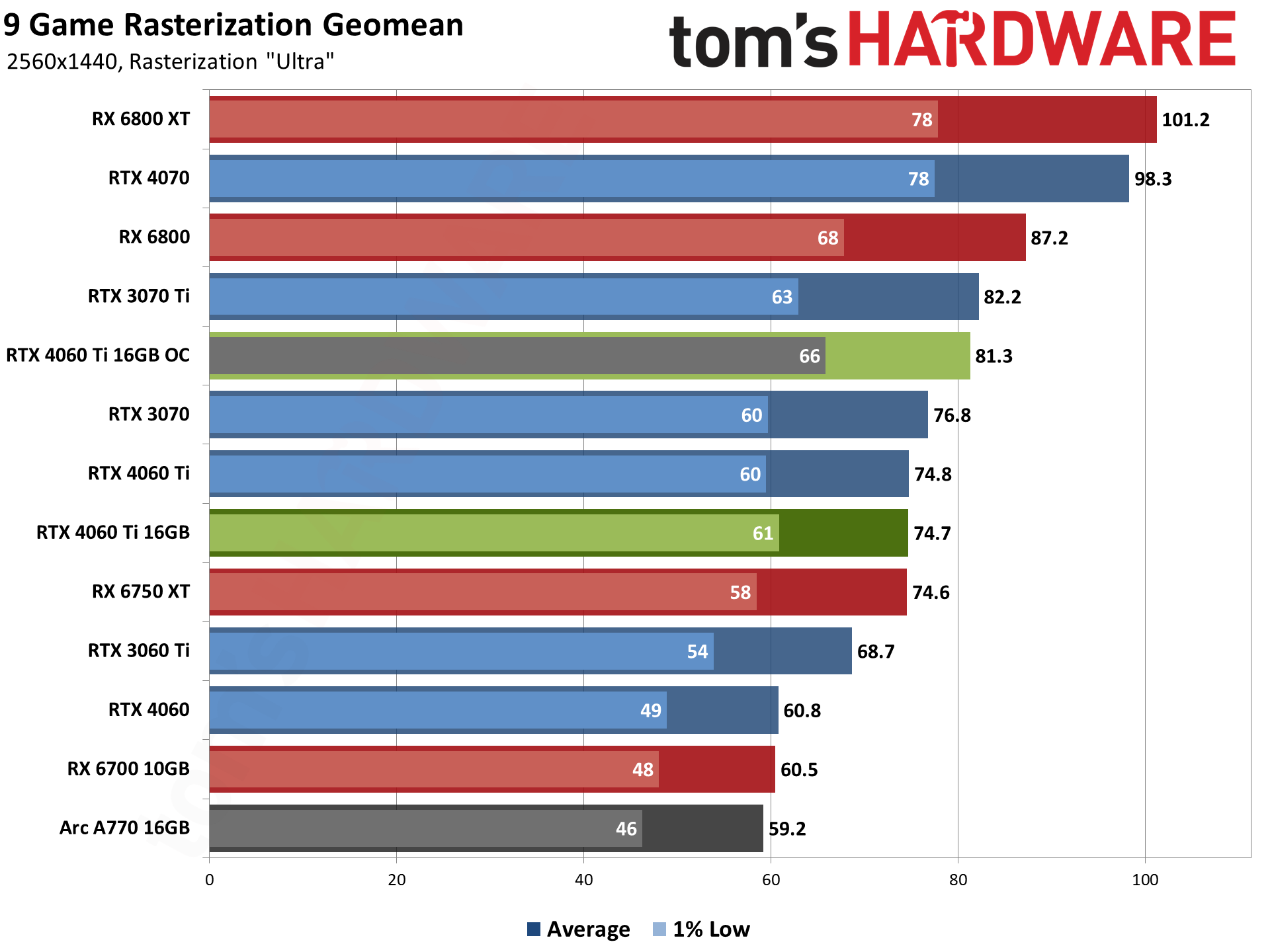

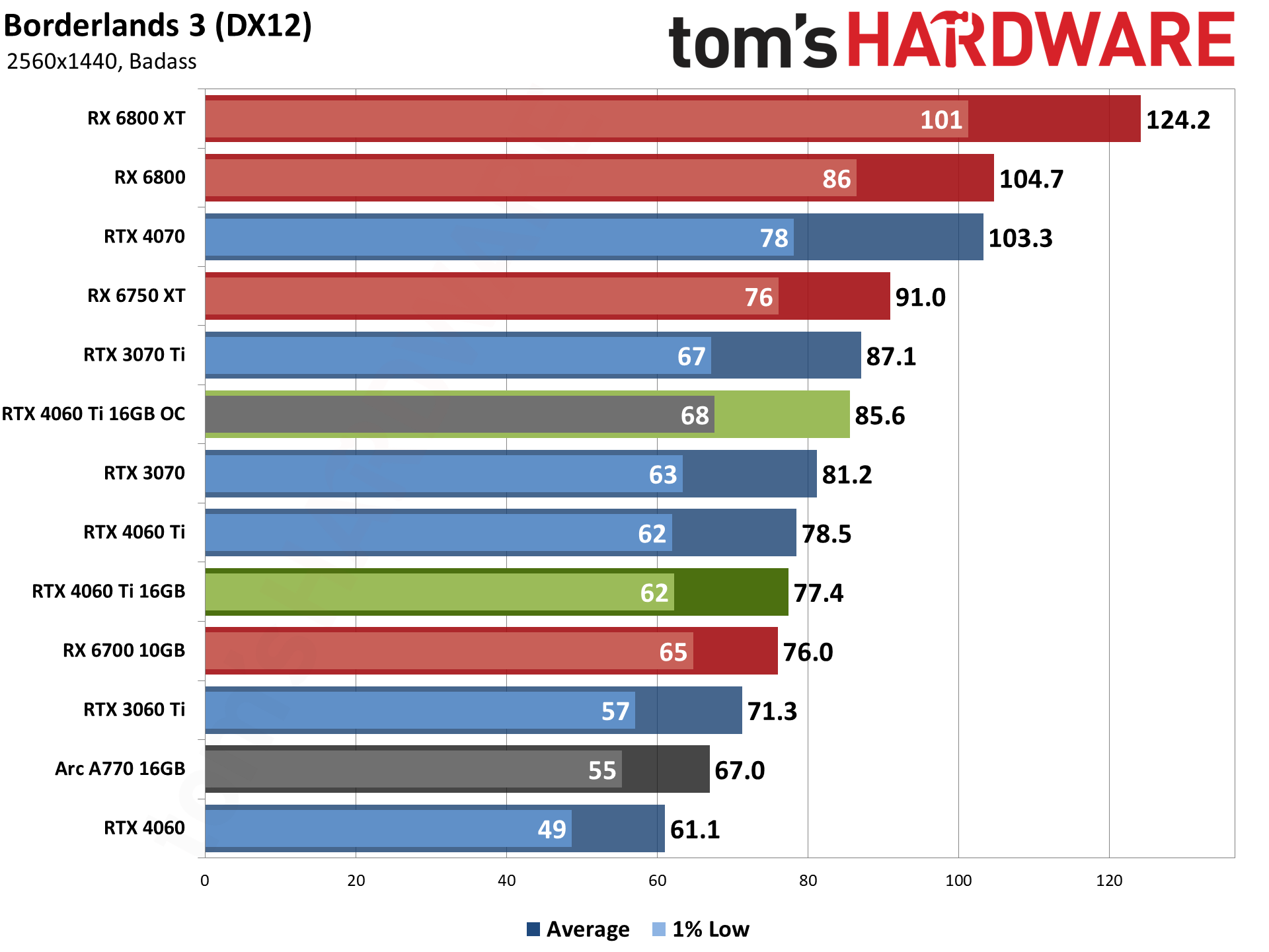

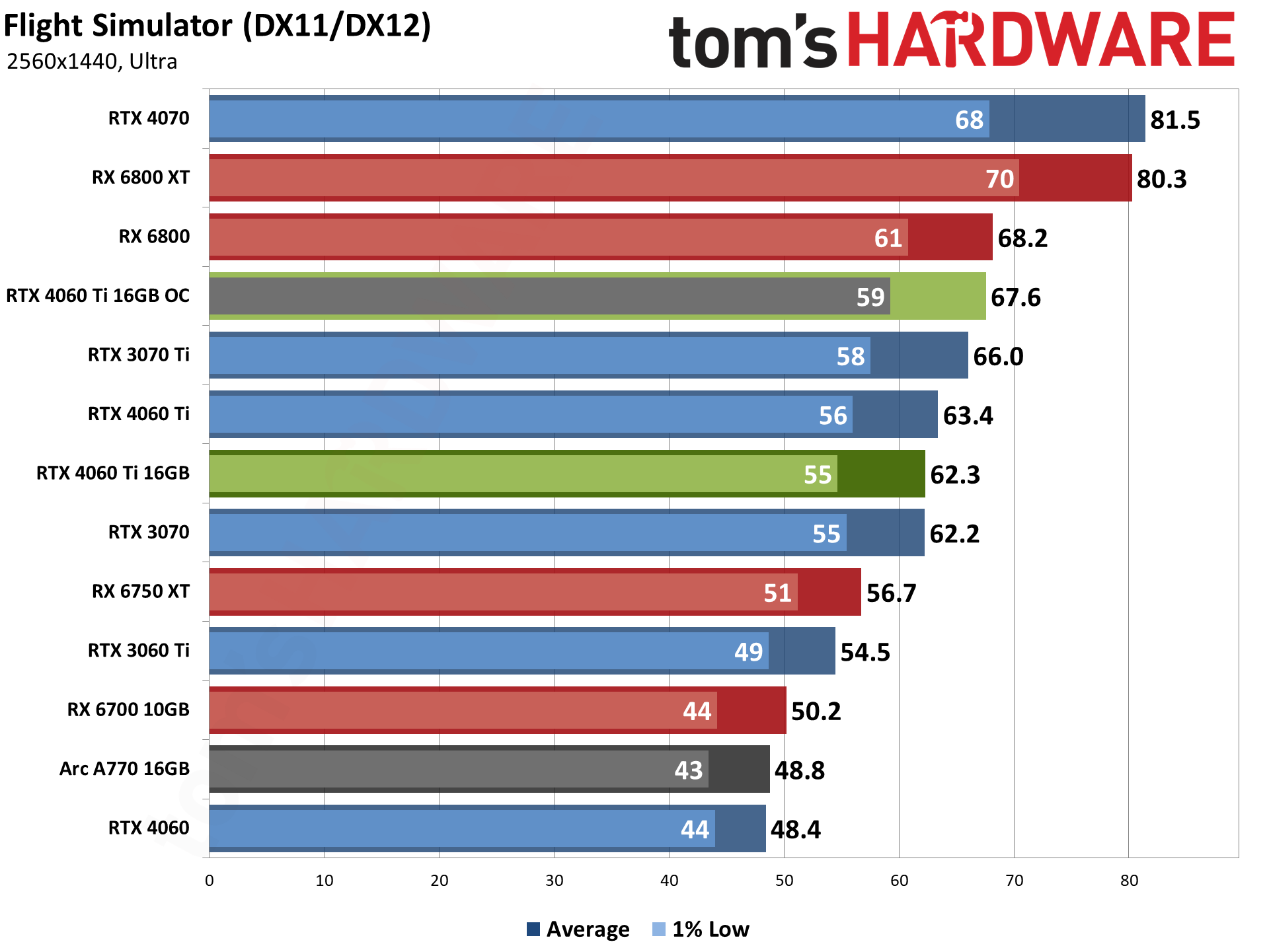
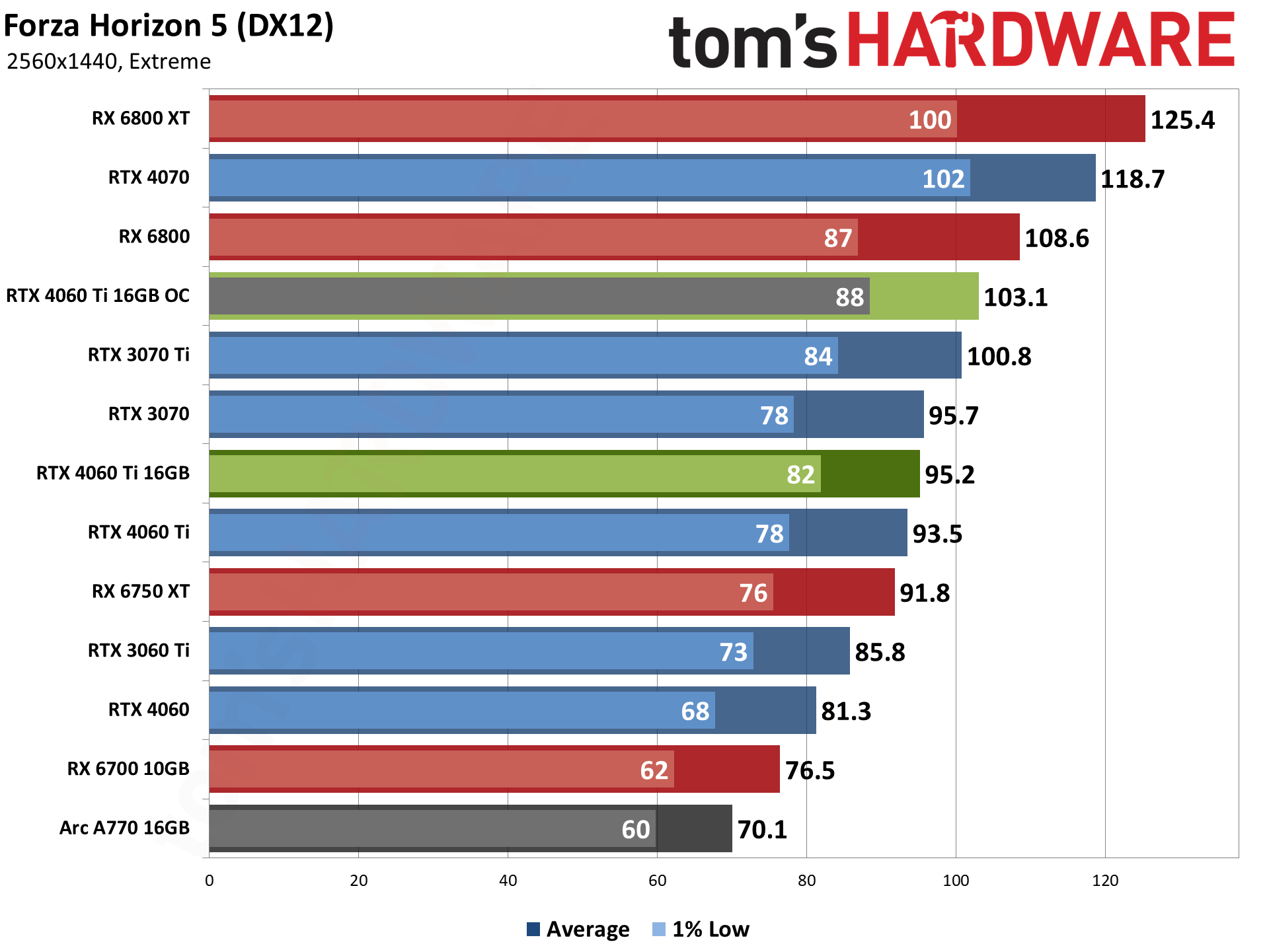

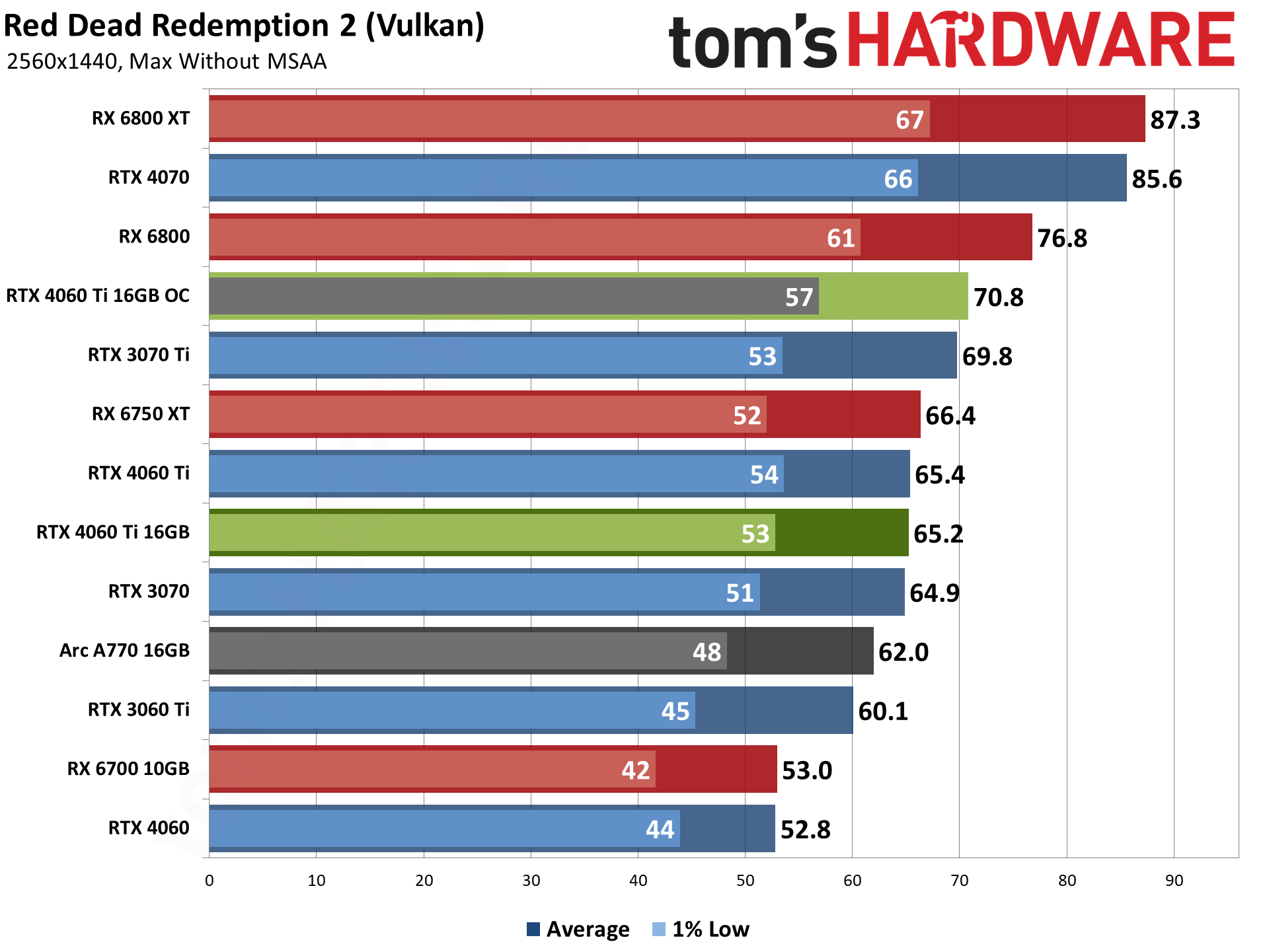
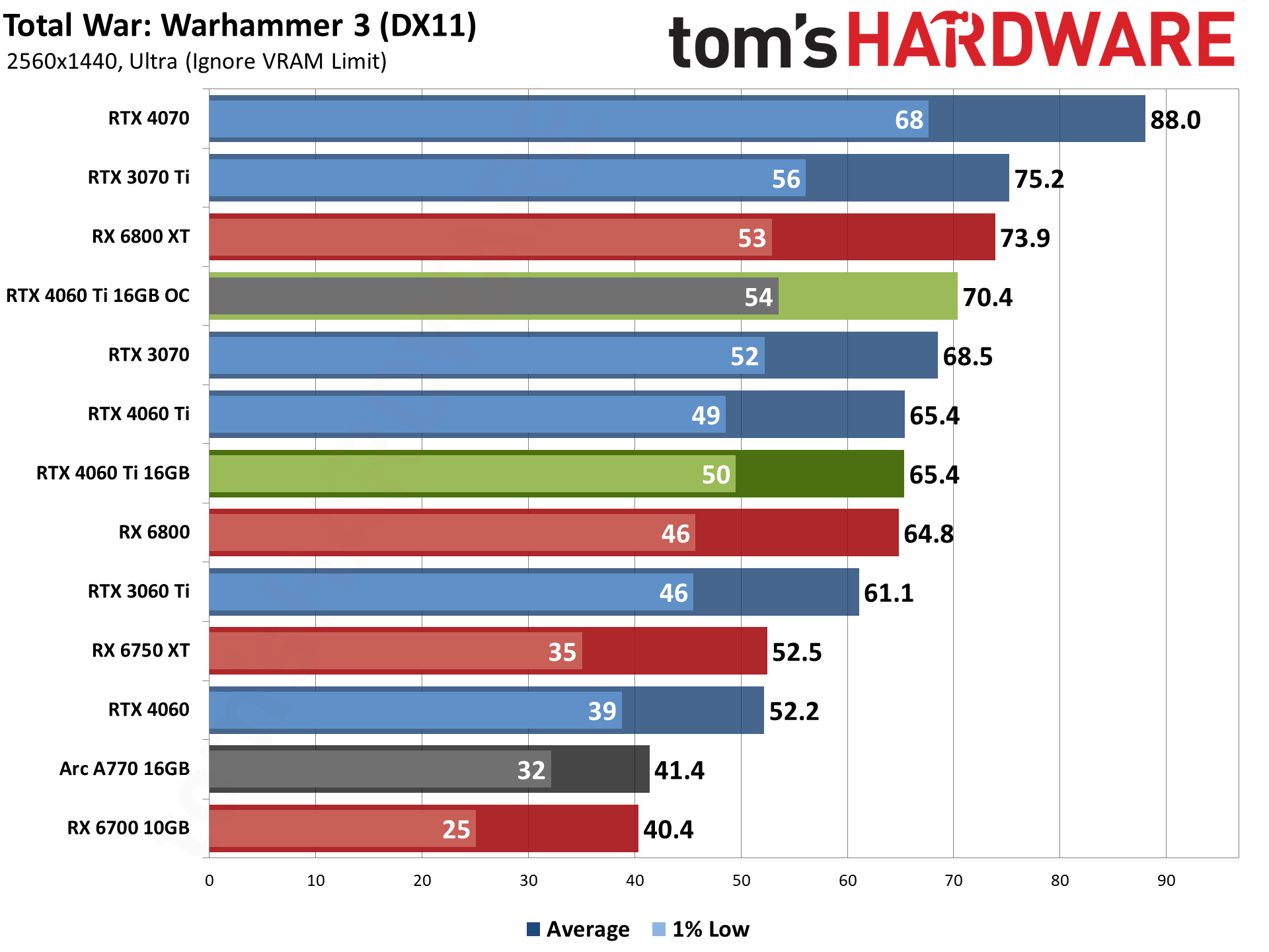
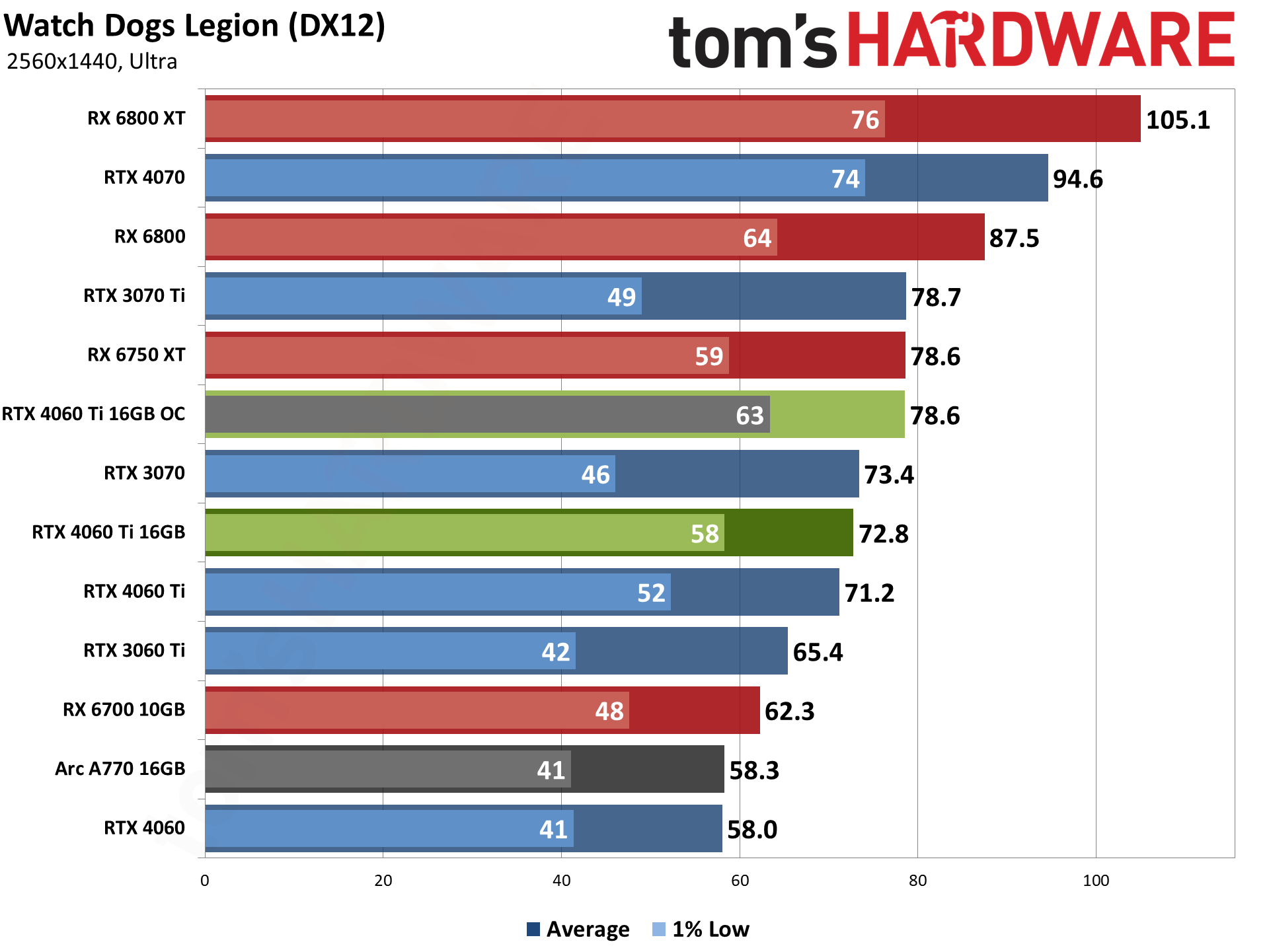
Rasterization performance still looks basically the same when comparing the 8GB and 16GB models — even the 1% low average fps doesn't really differ much. The 16GB 4060 Ti was slower in a few tests and slightly faster in others, leading to a 0.1% difference in overall performance for the nine rasterization games. For the 1% lows, the 16GB does manage a 2.2% overall lead, mostly thanks to a few games in our suite that benefited from the extra VRAM.
Forza Horizon 5 and Horizon Zero Dawn both had 4–5 percent higher minimum (1% low) fps, while the biggest swing was in Watch Dogs Legion, where the 16GB card had 12% higher minimum fps. All of those games were still hanging out above 60 fps average performance, while the minimum fps in Watch Dogs Legion went from 52 to 58 fps — which means it was still dropping below 60 fps on occasion, and for fixed refresh rate displays, you'd want a bit more muscle.
While on the subject of Nvidia GPUs, let's also mention the RTX 4070 here. Its 12GB of VRAM on a 192-bit interface, coupled with higher compute performance, ends up being a far better option unless VRAM capacity is your sole goal. Even at 1080p, it's around 20–30 percent faster than the 4060 Ti 16GB. If you're even considering spending $100 extra to go from 8GB to 16GB with an otherwise equivalent GPU, you'd be much better off forking over another $100 to go from the 16GB card to the RTX 4070. Or alternatively, look to the AMD GPUs.
At 1440p ultra, the RX 6800 XT and RTX 4070 are basically tied in rasterization performance, and both are over 30% faster than the RTX 4060 Ti 16TGB. If you want an Nvidia GPU, paying more for the 4070 still represents the better choice: 32% more performance for 20% more money. If you're open to AMD, you can get 36% more performance at 1440p while only paying about 4% extra (at current prices).
Among the individual games, the AMD 6800 XT ranges from being 13% faster (Warhammer 3) to as much as 60% faster (Borderlands 3). Those are the bookends, but for rasterization games, AMD consistently offers 30% or more performance (outside of Warhammer 3, the only exception in our testing). Having lots of VRAM, a big L3 cache, and a 256-bit interface helps quite a bit, in other words.
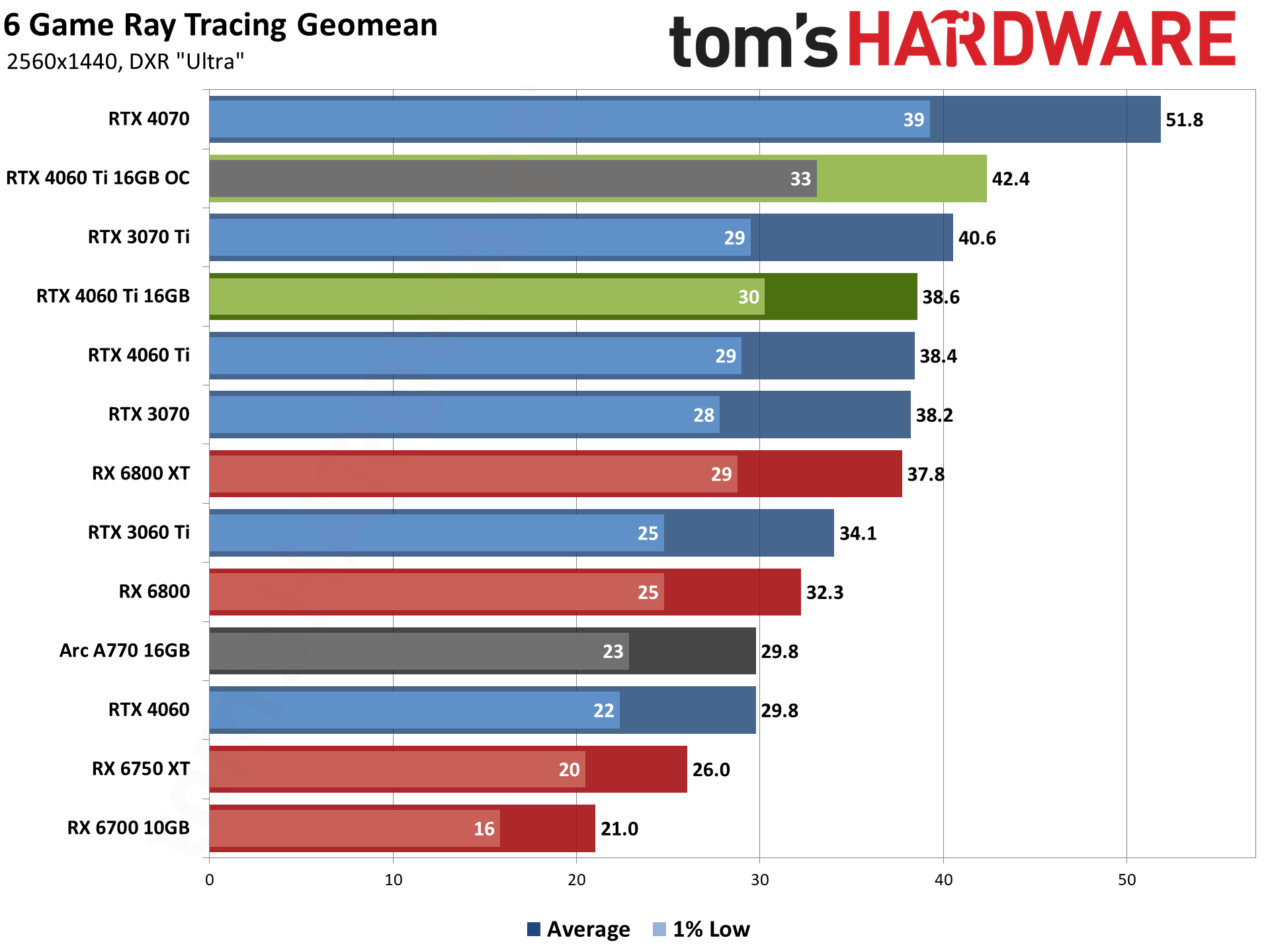
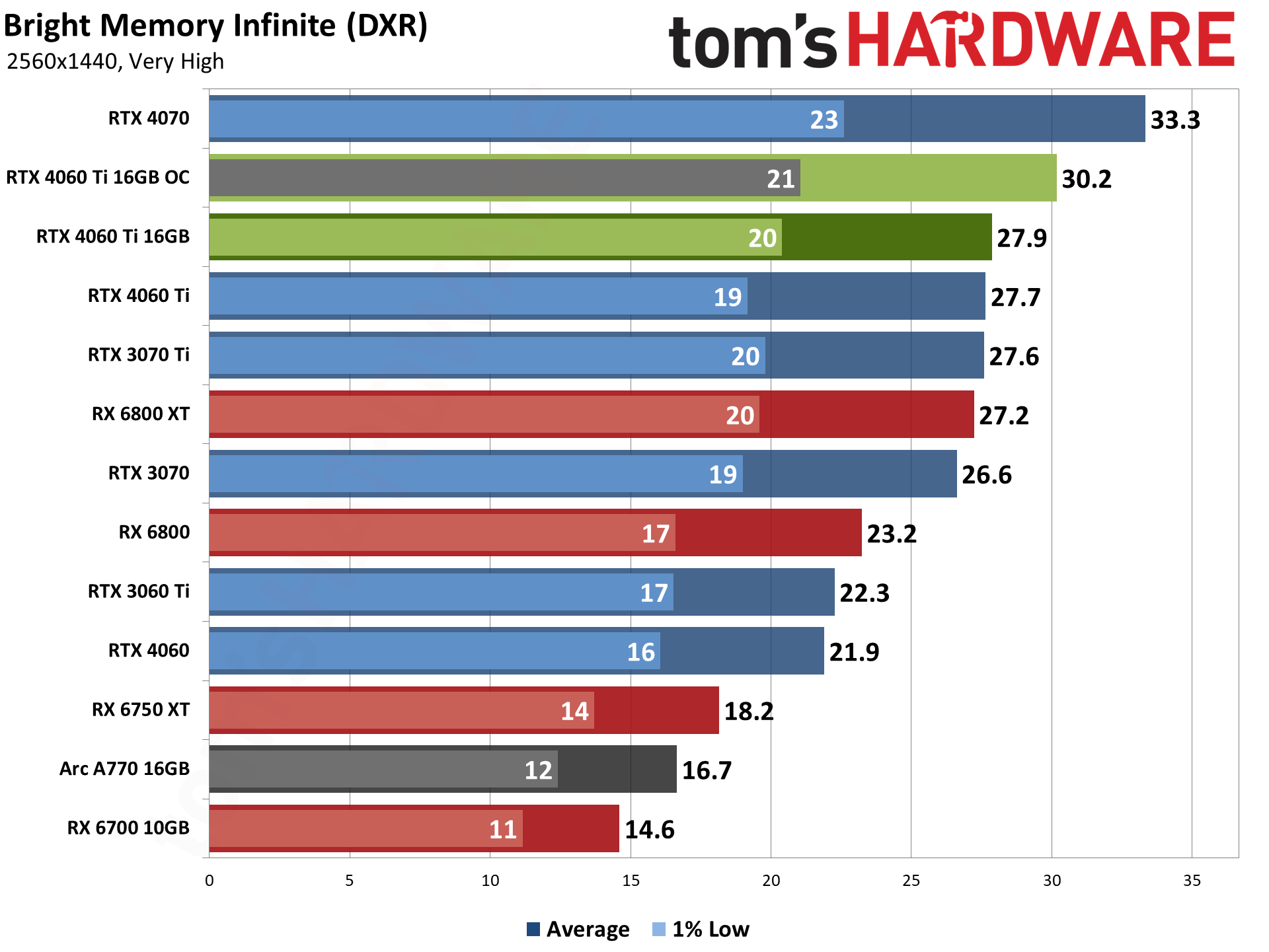
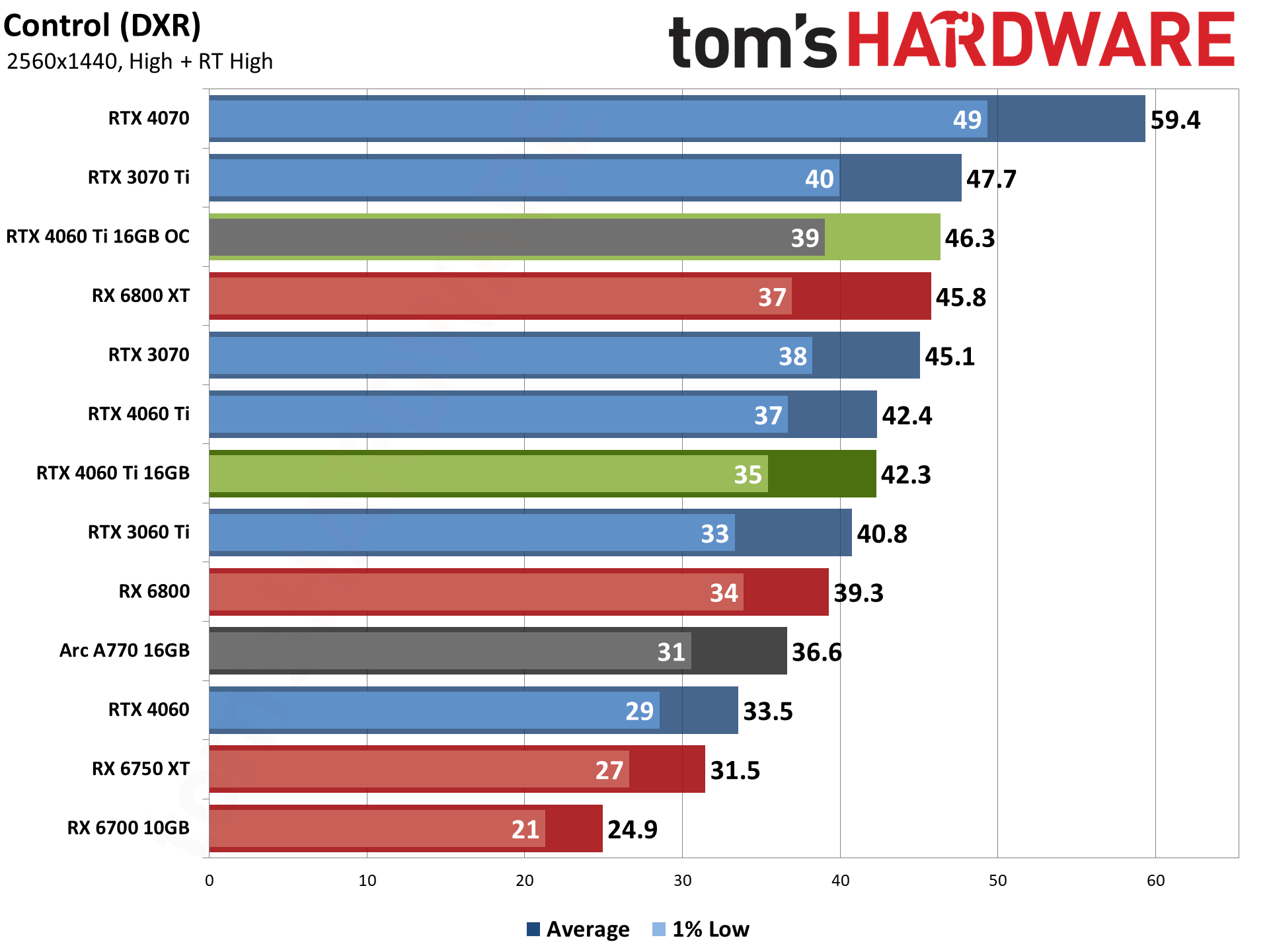
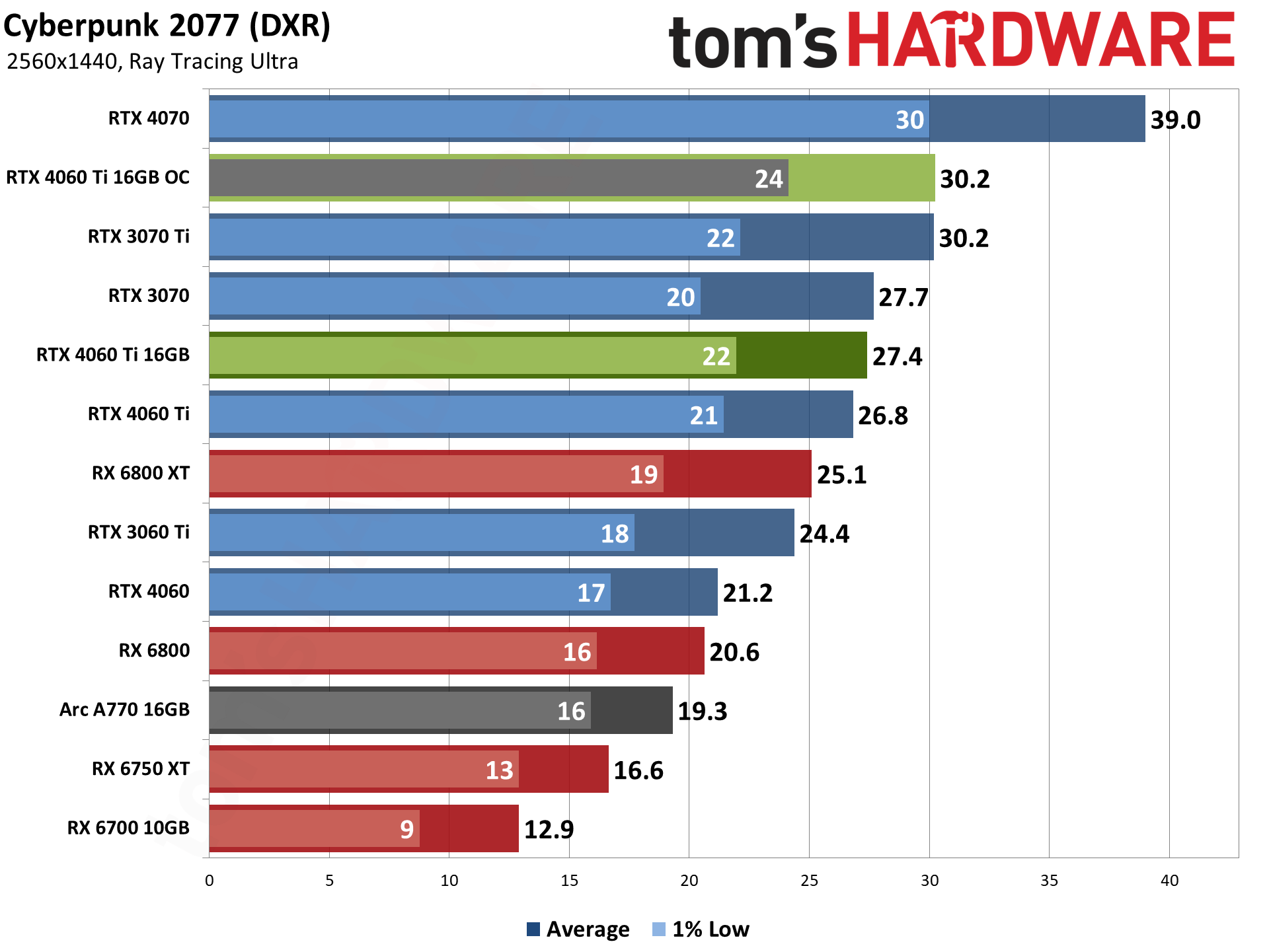

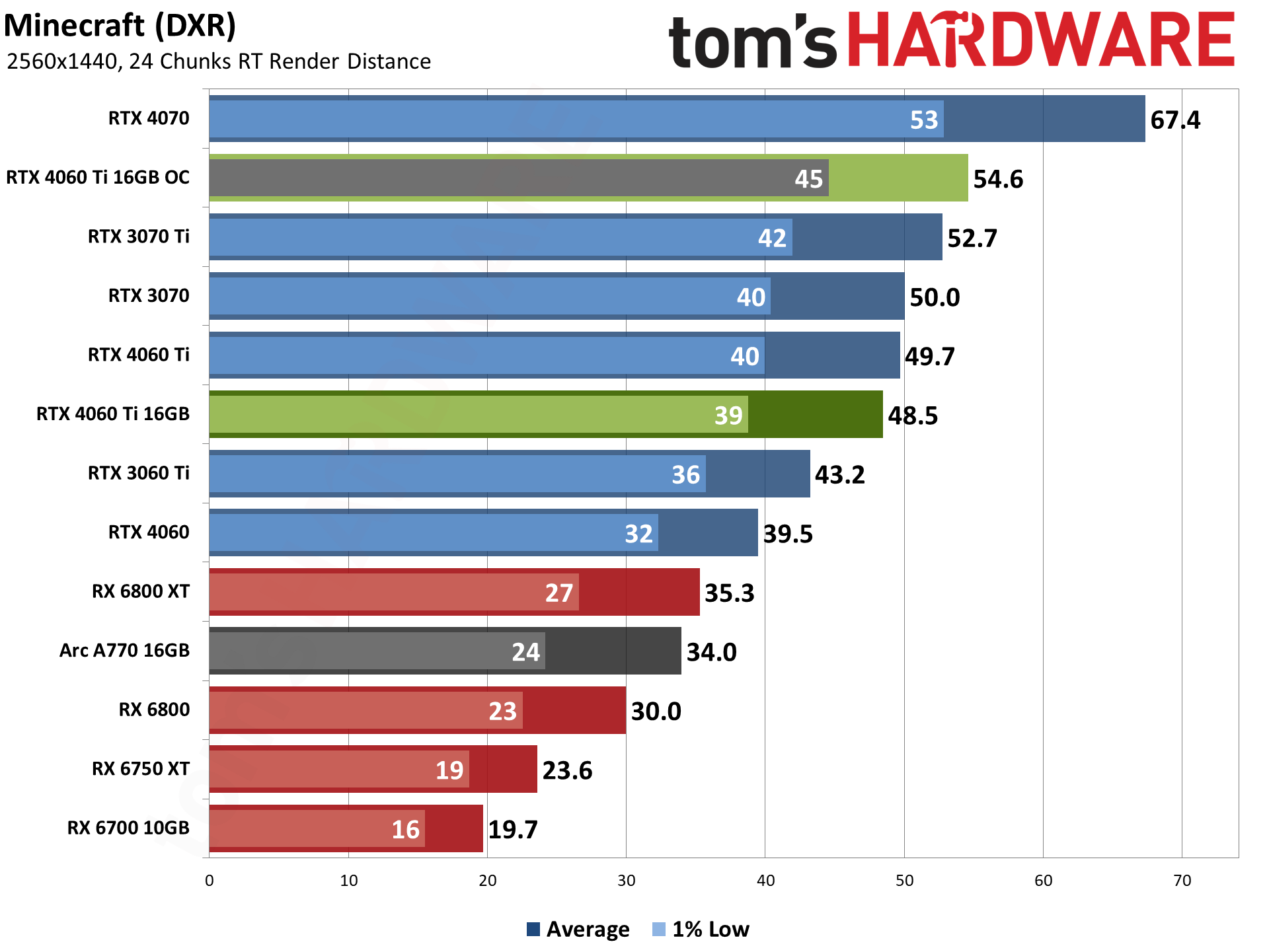

Ray tracing at 1440p ultra still favors Nvidia over AMD, however, if that's important to you. It's a relatively slim advantage when looking at the 4060 Ti and 6800 XT, still skewed by Minecraft, where Nvidia holds a 27% lead. Otherwise, you get a generally superior experience from AMD — slightly slower in some games, but faster in others.
Of course, there's still the question of power use, and there's no getting around the fact that the 6800 XT uses quite a bit more power than the 4060 Ti 16GB — roughly 100W more. And there's also still DLSS upscaling and Frame Generation to consider. Still, the 4060 Ti 16GB costs too much for the amount of performance you get.
Again, looking at the previous generation RTX 3070, there's been no gain in performance per dollar at 1440p, whether in ray tracing or rasterization. Frame Generation can help, but it's by no means a panacea. If you already have a mid-tier 30-series GPU and don't want to move up to the more expensive 40-series models, this looks like yet another good generation to sit out.
- MORE: Best Graphics Cards
- MORE: GPU Benchmarks and Hierarchy
- MORE: All Graphics Content
Get Tom's Hardware's best news and in-depth reviews, straight to your inbox.
Current page: GeForce RTX 4060 Ti 16GB: 1440p Ultra Gaming Performance
Prev Page GeForce RTX 4060 Ti 16GB: 1080p Medium Gaming Performance Next Page GeForce RTX 4060 Ti 16GB: 4K Ultra Gaming Performance
Jarred Walton is a senior editor at Tom's Hardware focusing on everything GPU. He has been working as a tech journalist since 2004, writing for AnandTech, Maximum PC, and PC Gamer. From the first S3 Virge '3D decelerators' to today's GPUs, Jarred keeps up with all the latest graphics trends and is the one to ask about game performance.
-
JarredWaltonGPU I just want to clarify something here: The score is a result of both pricing as well as performance and features, plus I took a look (again) at our About Page and the scores breakdown. This is most definitely a "Meh" product right now. Some of my previous reviews may have been half a point (star) higher than warranted. I've opted to "correct" my scale and thus this lands at the 2.5-star mark.Reply
I do feel our descriptions of some of the other scores are way too close together. My previous reviews were based more on my past experience and an internal ranking that's perhaps not what the TH text would suggest. Here's how I'd break it down:
5 = Practically perfect
4.5 = Excellent
4 = Good
3.5 = Okay, possibly a bad price
3 = Okay but with serious caveats (pricing, performance, and/or other factors)
2.5 = Meh, niche use cases
...
The bottom four categories are still basically fine as described. Pretty much the TH text has everything from 3-star to 5-star as a "recommended" and that doesn't really jive with me. 🤷♂️
This would have been great as a 3060 Ti replacement if it had 12GB and a 192-bit bus with a $399 price point. Then the 4060 Ti 8GB could have been a 3060 replacement with 8GB and a 128-bit bus at the $329 price point. And RTX 4060 would have been a 3050 replacement at $249.
Fundamentally, this is a clearly worse value and specs proposition than the RTX 4060 Ti 8GB and the RTX 4070. It's way too close to the former and not close enough to the latter to warrant the $499 price tag.
All of the RTX 40-series cards have generally been a case of "good in theory, priced too high." Everything from the 4080 down to the 4060 so far got a score of 3.5 stars from me. There's definitely wiggle room, and the text is more important than just that one final score. In retrospect, I still waffle on how the various parts actually rank.
Here's an alternate ranking, based on retrospect and the other parts that have come out:
4090: 4.5 star. It's an excellent halo part that gives you basically everything. Expensive, yes, but not really any worse than the previous gen 3090 / 3090 Ti and it's actually justifiable.
4080: 3-star. It's fine on performance, but the generational price increase was just too much. 3080 Ti should have been a $999 (at most) part, and this should be $999 or less.
4070 Ti: 3-star. Basically the same story as the 4080. It's fine performance, priced way too high generationally.
4070: 3.5-star. Still higher price than I'd like, but the overall performance story is much better.
4060 Ti 16GB: 2.5-star. Clearly a problem child, and there's a reason it wasn't sampled by Nvidia or its partners. (The review would have been done a week ago but I had a scheduled vacation.) This is now on the "Jarred's adjusted ranking."
4060 Ti 8GB: 3-star. Okay, still a higher price than we'd like and the 128-bit interface is an issue.
4060: 3.5-star. This isn't an amazing GPU, but it's cheaper than the 3060 launch price and so mostly makes up for the 128-bit interface, 8GB VRAM, and 24MB L2. Generally better as an overall pick than many of the other 40-series GPUs.
AMD's RX 7000-series parts are a similar story. I think at the current prices, the 7900 XTX works as a $949 part and warrants the 4-star score. 7900 XT has dropped to $759 and also warrants the 4-star score, maybe. The 7600 at $259 is still a 3.5-star part. So, like I said, there's wiggle room. I don't think any of the charts or text are fundamentally out of line, and a half-star adjustment is basically easily justifiable on almost any review I've done. -
Lord_Moonub Jarred, thanks for this review. I do wonder if there is more silver lining on this card we might be missing though. Could it act as a good budget 4K card? What happens if users dial back settings slightly at 4K (eg no Ray tracing, no bleeding edge ultra features ) and then make the most of DLSS 3 and the extra 16GB VRAM? I wonder if users might get something visually close to top line experience at a much lower price.Reply -
JarredWaltonGPU Reply
If you do those things, the 4060 Ti 8GB will be just as fast. Basically, dialing back settings to make this run better means dialing back settings so that more than 8GB isn't needed.Lord_Moonub said:Jarred, thanks for this review. I do wonder if there is more silver lining on this card we might be missing though. Could it act as a good budget 4K card? What happens if users dial back settings slightly at 4K (eg no Ray tracing, no bleeding edge ultra features ) and then make the most of DLSS 3 and the extra 16GB VRAM? I wonder if users might get something visually close to top line experience at a much lower price. -
Elusive Ruse Damn, @JarredWaltonGPU went hard! Appreciate the review and the clarification of your scoring system.Reply -
InvalidError More memory doesn't do you much good without the bandwidth to put it to use. The 4060(Ti) needed 192bits to strike the practically perfect balance between capacity and bandwidth. It would have brought the 4060(Ti) launches from steaming garbage to at least being a consistent upgrade over the 3060(Ti).Reply -
Greg7579 Jarred, I'm building with the 4090 but love reading your GPU reviews, even the ones that are far below what I would build with because I learn something every time.Reply
I am not a gamer but a GFX Medium Format photographer and have multiple TB of high-res 200MB raw files that I work extensively with in LightRoom and Photoshop. I build every 4 years and update as I go. I build the absolute top-end of the PC arena, which is way overkill, but I do it anyway.
As you know. Lightroom has many new amazing AI masking and noise reduction features that are like magic but so many users (photographers) are now grinding to a halt on their old rigs and laptops. Photographers tend to be behind the gamers on PC / laptop power. It is common knowledge on the photo and Adobe forums that these new AI capabilities eat VRAM like Skittles and extensively use the GPU for the grind. (Adobe LR & PS was always behind on using the GPU with the CPU for its editing and export tasks but now are going at it with gusto.) When I run an AI DeNoise on a big GFX 200MB file, my old rig with the 3080 (I'm building again soon with the 4 090) takes about 12 seconds to grind out the AI DeNoise task. Others rigs photographers use take several minutes or just crash. The Adobe and LightRoom forums are full of howling and gnashing of teeth about this. I tell them to start upgrading, but here is my question.... I can't wait to see what the 4090 will do with these photography-related workflow tasks in LR.
Can you comment on this and tell me if indeed this new Lightroom AI masking and DeNoise (which is a miracle for photographers) is so VRAM intensive that doubling the VRAM on a card like this would really help alot? Isn't it true that NVidea made some decisions 3 years ago that resulted in not having enough (now far cheaper) VRAM in the 40 series? It should be double or triple what it is right? Anything you can teach me about increased GPU power and VRAM in Adobe LR for us photographers? -
hotaru251 4060ti should of been closer to a 4070.Reply
the gap between em is huge and the cost is way too high. (doubly so that it requires dlss3 support to not get crippled by the limited bus) -
atomicWAR ReplyJarredWaltonGPU said:Some of my previous reviews may have been half a point (star) higher than warranted. I've opted to "correct" my scale and thus this lands at the 2.5-star mark.
Thank you for listening Jarred. I was one of those claiming on multiple recent gpu reviews that your scores were about a half star off though not alone in that sentiment either. I was quick to defend you from trolls though as you clearly were not shilling for Nvidia either. This post proves my faith was well placed in you. Thank you for being a straight arrow!
